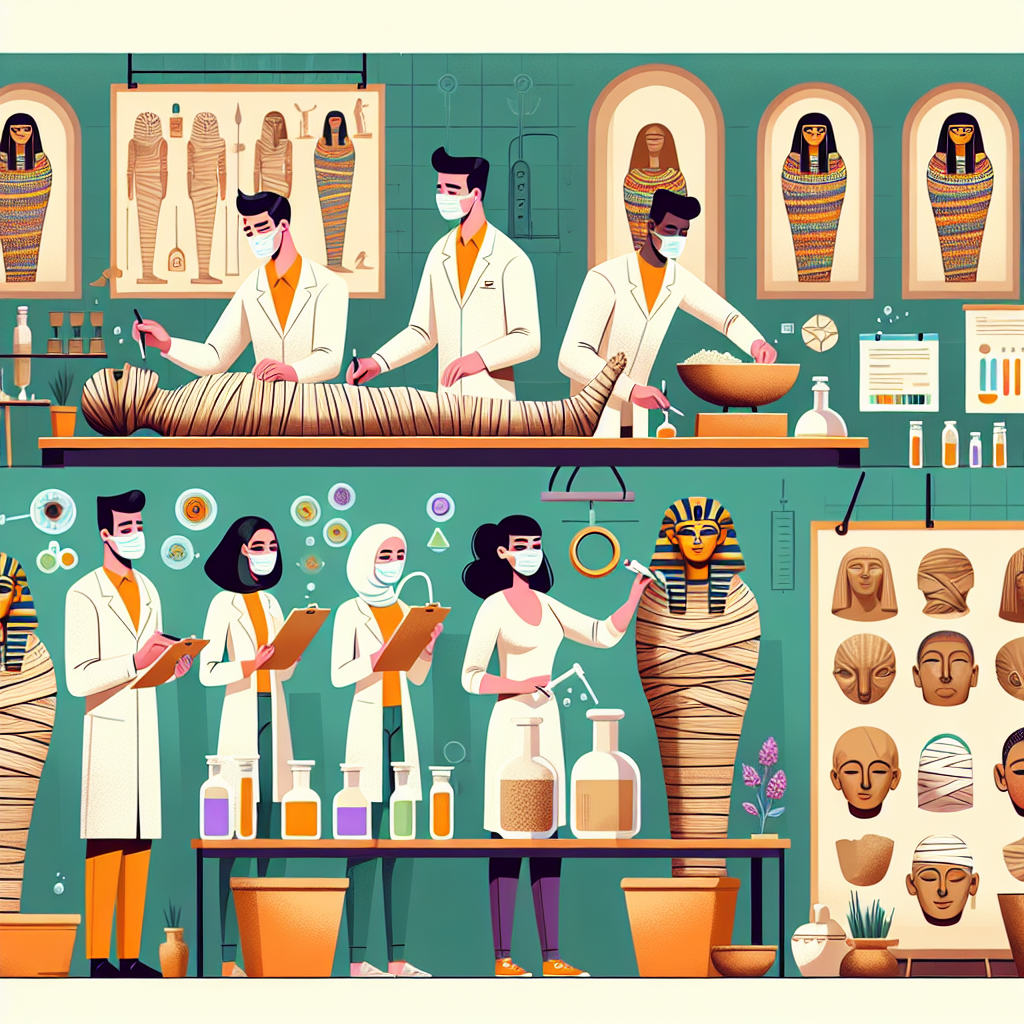Whale lover Ted Cheeseman has created a cool new way to identify individual whales using fancy technology called artificial intelligence (AI). His company, HappyWhale, lets people upload their whale photos to their website. The AI software then uses special technology, like what’s used to recognize human faces, to figure out which whale it is based on its tail shape, color, or markings. It can even tell you the whale’s name if it already has one, or you can give it a name yourself. It also shows you a map of where the whale has been seen. The website is free for everyone to use, but businesses have to pay a monthly fee.
HappyWhale uses the photos people upload to keep track of how many whales there are and where they go. This is part of a growing trend where conservation groups are using AI to help people identify animals and birds. For example, there’s an app called Merlin Bird ID that lets you take a picture or record a bird’s song, and the AI software will tell you what kind of bird it is. You can also add more information about the bird to help scientists learn more about them.
There’s another app called iNaturalist that uses AI to figure out what kind of animal or plant you’ve taken a picture of. The AI has been trained with lots of pictures of different species, and it keeps learning as more pictures are added. These apps not only help people learn more about wildlife, but they also help with conservation efforts. By getting people interested in wildlife and teaching them about it, these apps are encouraging people to protect the species they love.
HappyWhale’s whale tracking data was even used to convince a group of tour operators in Antarctica to slow down their ships to prevent whales from getting hurt. This shows how AI and the information people share can make a real difference in protecting animals.
Original news source: Name that whale! How AI aces animal spotting (BBC)
🎧 Listen:
Slow
Normal
Fast
📖 Vocabulary:
| 1 | identify | To figure out who someone is or what something is |
| 2 | artificial | Made by humans, not natural |
| 3 | upload | To send files or information from your computer to the internet |
| 4 | software | Programs that tell a computer how to do certain tasks |
| 5 | recognize | To know and remember someone or something because you have seen or heard about them before |
| 6 | markings | Unique patterns or designs that can be used to tell one thing from another |
| 7 | conservation | The protection and management of the natural environment and its inhabitants |
| 8 | species | Different kinds of living things, like animals or plants |
| 9 | trend | A general direction in which something is developing or changing |
| 10 | app | A mobile application you can use on your phone or tablet |
| 11 | record | To make a copy of sounds or images onto a tape or a disk |
| 12 | efforts | Attempts to achieve a goal |
| 13 | wildlife | Animals, birds, insects, etc., that are wild and live in a natural environment |
| 14 | operators | People who are in charge of running a business or service |
| 15 | convince | To persuade someone to believe something or do something |
Group or Classroom Activities
Warm-up Activities:
– Charades
Instructions: Divide the class into small groups. Give each group a set of whale-related words or phrases written on separate pieces of paper. One person from each group will pick a word or phrase and act it out without speaking, while the rest of the group tries to guess what it is. The group that guesses correctly gets a point. Continue until all the words or phrases have been used, and then tally up the points to declare a winner.
– News Summary
Instructions: Have the students read the article individually or in pairs. Then, ask each student to write a summary of the article in their own words. Afterward, have them share their summaries with a partner or small group and discuss any differences or similarities. Finally, have a class discussion to compare the different summaries and create a class summary together.
– Opinion Poll
Instructions: Divide the class into pairs or small groups. Have each group discuss the following question: “Do you think using AI technology to identify and track whales is a positive development for conservation efforts? Why or why not?” After discussing, each group should choose a spokesperson to share their opinion with the rest of the class. As a class, create a visual representation of the opinions, such as a graph or chart, to see the overall distribution of opinions.
– Vocabulary Pictionary
Instructions: Divide the class into pairs or small groups. Give each group a list of vocabulary words from the article related to whales and AI technology. One person from each group will choose a word and draw a picture to represent it, while the rest of the group tries to guess the word. The group that guesses correctly gets a point. Continue until all the words have been used, and then tally up the points to declare a winner.
– Think-Pair-Share
Instructions: Have the students read the article individually. Then, ask them to think about the following question: “How do you think AI technology can be further used to protect wildlife?” After giving them some time to think, have them pair up with a partner and share their ideas. Finally, have a class discussion to share and compare the different ideas, allowing students to expand on their thoughts and respond to each other’s suggestions.
🤔 Comprehension Questions:
1. What is HappyWhale and how does it use artificial intelligence?
2. How does the AI software in HappyWhale identify individual whales?
3. What information does HappyWhale provide about the whales?
4. Why do businesses have to pay a monthly fee to use HappyWhale?
5. What is the purpose of using AI in apps like Merlin Bird ID and iNaturalist?
6. How does iNaturalist use AI to identify animals and plants?
7. How do apps like Merlin Bird ID and iNaturalist contribute to conservation efforts?
8. Can you give an example of how HappyWhale’s data was used to protect whales?
Go to answers ⇩
🎧✍️ Listen and Fill in the Gaps:
Whale lover Ted Cheeseman has created a cool new way to identify individual whales using fancy technology called artificial intelligence (AI). His company, HappyWhale, lets (1)______ upload their whale photos to their website. The AI software then uses (2)______ technology, like what’s used to recognize human (3)______, to figure out which whale it is based on its tail shape, color, or (4)______. It can even tell you the whale’s name if it already has one, or you can give it a name yourself. It also shows you a map of where the (5)______ has been seen. The (6)______ is free for everyone to use, but businesses have to pay a (7)______ fee.
HappyWhale uses the photos people upload to keep (8)______ of how many whales there are and where they go. This is part of a growing trend where conservation groups are using AI to help people identify animals and birds. For example, there’s an app called Merlin Bird ID that lets you take a picture or record a bird’s song, and the AI software will tell you what kind of bird it is. You can also add more information about the bird to help scientists learn more about them.
There’s another app called iNaturalist that uses AI to (9)______ out what kind of animal or plant you’ve (10)______ a (11)______ of. The AI has been trained with lots of pictures of different species, and it keeps learning as more pictures are (12)______. These apps not only help people learn more about (13)______, but they also help with conservation efforts. By getting people interested in wildlife and teaching them about it, these apps are encouraging people to (14)______ the species they love.
HappyWhale’s whale tracking data was even used to (15)______ a (16)______ of tour operators in Antarctica to slow down their ships to prevent whales from getting hurt. This shows how AI and the information people share can make a real difference in protecting animals.
Go to answers ⇩
💬 Discussion Questions:
Students can ask a partner these questions, or discuss them as a group.
1. What is artificial intelligence (AI) and how is it used in HappyWhale?
2. How would you feel if you could give a whale a name? Why or why not?
3. Do you like taking pictures of animals? Why or why not?
4. Do you think it’s important to track the movements of whales? Why or why not?
5. What is Merlin Bird ID and how does it use AI?
6. How do you think apps like Merlin Bird ID and iNaturalist help with conservation efforts?
7. Why do you think it’s important to protect wildlife species?
8. How do you think AI and information sharing can make a difference in protecting animals?
9. Have you ever seen a whale in person? How did it make you feel?
10. Do you think businesses should have to pay a monthly fee to use HappyWhale? Why or why not?
11. What other animals or plants do you think could benefit from AI identification technology?
12. How do you think AI can help scientists learn more about different species?
13. Why do you think it’s important for people to learn about wildlife?
14. How do you think apps like HappyWhale can encourage people to protect animals?
15. Have you ever participated in any conservation efforts? If so, what did you do and how did it make you feel?
Individual Activities
📖💭 Vocabulary Meanings:
Match each word to its meaning.
Words:
1. identify
2. artificial
3. upload
4. software
5. recognize
6. markings
7. conservation
8. species
9. trend
10. app
11. record
12. efforts
13. wildlife
14. operators
15. convince
Meanings:
(A) Programs that tell a computer how to do certain tasks
(B) Different kinds of living things, like animals or plants
(C) Made by humans, not natural
(D) Unique patterns or designs that can be used to tell one thing from another
(E) A general direction in which something is developing or changing
(F) Animals, birds, insects, etc., that are wild and live in a natural environment
(G) To send files or information from your computer to the internet
(H) To make a copy of sounds or images onto a tape or a disk
(I) To figure out who someone is or what something is
(J) To persuade someone to believe something or do something
(K) The protection and management of the natural environment and its inhabitants
(L) Attempts to achieve a goal
(M) A mobile application you can use on your phone or tablet
(N) To know and remember someone or something because you have seen or heard about them before
(O) People who are in charge of running a business or service
Go to answers ⇩
🔡 Multiple Choice Questions:
1. What is the purpose of HappyWhale?
(a) To track the migration patterns of birds
(b) To educate people about wildlife conservation
(c) To sell photos of whales online
(d) To identify individual whales using AI technology
2. How does HappyWhale identify individual whales?
(a) By taking DNA samples from the whales
(b) By listening to their songs and calls
(c) By analyzing their tail shape, color, or markings using AI software
(d) By tracking their GPS coordinates
3. What can users of HappyWhale learn about a whale?
(a) Its age, weight, and size
(b) Its name, tail shape, color, markings, and where it has been seen
(c) Its favorite food and habitat
(d) Its migration patterns and breeding habits
4. Who has to pay a monthly fee to use HappyWhale?
(a) Conservation groups
(b) Businesses
(c) Tourists
(d) Everyone has to pay
5. What is Merlin Bird ID?
(a) An organization that trains birds to perform tricks
(b) A website that sells bird watching equipment
(c) A magazine about bird conservation
(d) An app that uses AI to identify birds based on pictures or recordings
6. How does iNaturalist identify animals and plants?
(a) By analyzing DNA samples
(b) By listening to their sounds and calls
(c) By using AI trained with pictures of different species
(d) By tracking their migration patterns
7. How do apps like Merlin Bird ID and iNaturalist contribute to conservation efforts?
(a) By getting people interested in wildlife and teaching them about it
(b) By selling pictures of animals and plants online
(c) By training animals to avoid dangerous areas
(d) By encouraging people to hunt and capture wildlife
8. How was HappyWhale’s data used to protect whales in Antarctica?
(a) It convinced tour operators to slow down their ships
(b) It helped scientists track the migration patterns of whales
(c) It raised awareness about whale conservation through social media
(d) It led to the creation of new laws to protect whales in the area
Go to answers ⇩
🕵️ True or False Questions:
1. Other apps, like Merlin Bird ID and iNaturalist, do not use AI to help people identify different species of birds, animals, and plants.
2. HappyWhale cannot tell you the name of the whale if it already has one, or you can give it a name yourself.
3. Ted Cheeseman has not created a website called HappyWhale that uses artificial intelligence to identify individual whales.
4. The AI software on HappyWhale uses special technology to recognize a whale based on its tail shape, color, or markings.
5. HappyWhale uses the photos people upload to keep track of the number of whales and their locations.
6. HappyWhale is free for everyone to use, but businesses have to pay a monthly fee.
7. HappyWhale’s whale tracking data has not been used to convince tour operators in Antarctica to slow down their ships and protect whales from harm.
8. The website provides a map of where the whale has been seen.
Go to answers ⇩
📝 Write a Summary:
Write a summary of this news article in two sentences.
Check your writing now with the best free AI for English writing!
Writing Questions:
Answer the following questions. Write as much as you can for each answer.
Check your answers with our free English writing assistant!
1. What is HappyWhale and how does it use artificial intelligence?
2. How does the AI software in HappyWhale identify individual whales?
3. What are some other examples of apps that use AI to identify animals and birds?
4. How do these apps help with conservation efforts?
5. Can you give an example of how HappyWhale’s data was used to protect whales?
✅ Answers
🤔✅ Comprehension Question Answers:
1. HappyWhale is a company that uses artificial intelligence (AI) to identify individual whales. People can upload their whale photos to the HappyWhale website, and the AI software will use special technology to figure out which whale it is based on its tail shape, color, or markings.
Answer: HappyWhale is a company that uses artificial intelligence (AI) to identify individual whales. People can upload their whale photos to the HappyWhale website, and the AI software will use special technology to figure out which whale it is based on its tail shape, color, or markings.
2. The AI software in HappyWhale identifies individual whales by analyzing their tail shape, color, or markings. It uses similar technology to what is used to recognize human faces.
Answer: The AI software in HappyWhale identifies individual whales by analyzing their tail shape, color, or markings. It uses similar technology to what is used to recognize human faces.
3. HappyWhale provides information about the whales such as their name (if they already have one), or you can give them a name yourself. It also shows a map of where the whale has been seen.
Answer: HappyWhale provides information about the whales such as their name (if they already have one), or you can give them a name yourself. It also shows a map of where the whale has been seen.
4. Businesses have to pay a monthly fee to use HappyWhale because the website is free for everyone else to use. The fee helps support the maintenance and development of the AI software and the website.
Answer: Businesses have to pay a monthly fee to use HappyWhale because the website is free for everyone else to use. The fee helps support the maintenance and development of the AI software and the website.
5. The purpose of using AI in apps like Merlin Bird ID and iNaturalist is to help people identify animals and birds. The AI software analyzes pictures or recordings of birds or animals and provides information about the species. These apps also encourage people to learn more about wildlife and protect the species they love.
Answer: The purpose of using AI in apps like Merlin Bird ID and iNaturalist is to help people identify animals and birds. The AI software analyzes pictures or recordings of birds or animals and provides information about the species. These apps also encourage people to learn more about wildlife and protect the species they love.
6. iNaturalist uses AI to identify animals and plants by analyzing pictures taken by users. The AI has been trained with lots of pictures of different species, and it keeps learning as more pictures are added. This helps users identify the species they have photographed.
Answer: iNaturalist uses AI to identify animals and plants by analyzing pictures taken by users. The AI has been trained with lots of pictures of different species, and it keeps learning as more pictures are added. This helps users identify the species they have photographed.
7. Apps like Merlin Bird ID and iNaturalist contribute to conservation efforts by getting people interested in wildlife and teaching them about it. By helping people identify and learn more about different species, these apps encourage people to protect the species they love.
Answer: Apps like Merlin Bird ID and iNaturalist contribute to conservation efforts by getting people interested in wildlife and teaching them about it. By helping people identify and learn more about different species, these apps encourage people to protect the species they love.
8. HappyWhale’s data was used to convince a group of tour operators in Antarctica to slow down their ships to prevent whales from getting hurt. The information provided by HappyWhale about the whales’ movements and locations helped show the tour operators the importance of protecting the whales and taking measures to avoid harming them.
Answer: HappyWhale’s data was used to convince a group of tour operators in Antarctica to slow down their ships to prevent whales from getting hurt. The information provided by HappyWhale about the whales’ movements and locations helped show the tour operators the importance of protecting the whales and taking measures to avoid harming them.
Go back to questions ⇧
🎧✍️✅ Listen and Fill in the Gaps Answers:
(1) people
(2) special
(3) faces
(4) markings
(5) whale
(6) website
(7) monthly
(8) track
(9) figure
(10) taken
(11) picture
(12) added
(13) wildlife
(14) protect
(15) convince
(16) group
Go back to questions ⇧
📖💭✅ Vocabulary Meanings Answers:
1. identify
Answer: (I) To figure out who someone is or what something is
2. artificial
Answer: (C) Made by humans, not natural
3. upload
Answer: (G) To send files or information from your computer to the internet
4. software
Answer: (A) Programs that tell a computer how to do certain tasks
5. recognize
Answer: (N) To know and remember someone or something because you have seen or heard about them before
6. markings
Answer: (D) Unique patterns or designs that can be used to tell one thing from another
7. conservation
Answer: (K) The protection and management of the natural environment and its inhabitants
8. species
Answer: (B) Different kinds of living things, like animals or plants
9. trend
Answer: (E) A general direction in which something is developing or changing
10. app
Answer: (M) A mobile application you can use on your phone or tablet
11. record
Answer: (H) To make a copy of sounds or images onto a tape or a disk
12. efforts
Answer: (L) Attempts to achieve a goal
13. wildlife
Answer: (F) Animals, birds, insects, etc., that are wild and live in a natural environment
14. operators
Answer: (O) People who are in charge of running a business or service
15. convince
Answer: (J) To persuade someone to believe something or do something
Go back to questions ⇧
🔡✅ Multiple Choice Answers:
1. What is the purpose of HappyWhale?
Answer: (d) To identify individual whales using AI technology
2. How does HappyWhale identify individual whales?
Answer: (c) By analyzing their tail shape, color, or markings using AI software
3. What can users of HappyWhale learn about a whale?
Answer: (b) Its name, tail shape, color, markings, and where it has been seen
4. Who has to pay a monthly fee to use HappyWhale?
Answer: (b) Businesses
5. What is Merlin Bird ID?
Answer: (d) An app that uses AI to identify birds based on pictures or recordings
6. How does iNaturalist identify animals and plants?
Answer: (c) By using AI trained with pictures of different species
7. How do apps like Merlin Bird ID and iNaturalist contribute to conservation efforts?
Answer: (a) By getting people interested in wildlife and teaching them about it
8. How was HappyWhale’s data used to protect whales in Antarctica?
Answer: (a) It convinced tour operators to slow down their ships
Go back to questions ⇧
🕵️✅ True or False Answers:
1. Other apps, like Merlin Bird ID and iNaturalist, do not use AI to help people identify different species of birds, animals, and plants. (Answer: False)
2. HappyWhale cannot tell you the name of the whale if it already has one, or you can give it a name yourself. (Answer: False)
3. Ted Cheeseman has not created a website called HappyWhale that uses artificial intelligence to identify individual whales. (Answer: False)
4. The AI software on HappyWhale uses special technology to recognize a whale based on its tail shape, color, or markings. (Answer: True)
5. HappyWhale uses the photos people upload to keep track of the number of whales and their locations. (Answer: True)
6. HappyWhale is free for everyone to use, but businesses have to pay a monthly fee. (Answer: True)
7. HappyWhale’s whale tracking data has not been used to convince tour operators in Antarctica to slow down their ships and protect whales from harm. (Answer: False)
8. The website provides a map of where the whale has been seen. (Answer: True)
Go back to questions ⇧












